Morton's Neuroma is known as midfoot pain syndrome. A neuroma is called a benign nodule of a peripheral nerve. On the other hand, Morton's disease is a compression and nerve irritation. It is often associated with an inflammatory process and, as a result, with degenerative changes in the metatarsal area.
Morton's neuroma appears when the nerve between the bones in the foot becomes compressed and consequently undergoes an inflammatory process. The neuroma can usually be felt on the front of the foot between the toes, making walking difficult and generating pain. The treatment process is fundamental. In its absence, the neuroma may enlarge, and damage to the nerve is likely to become permanent.
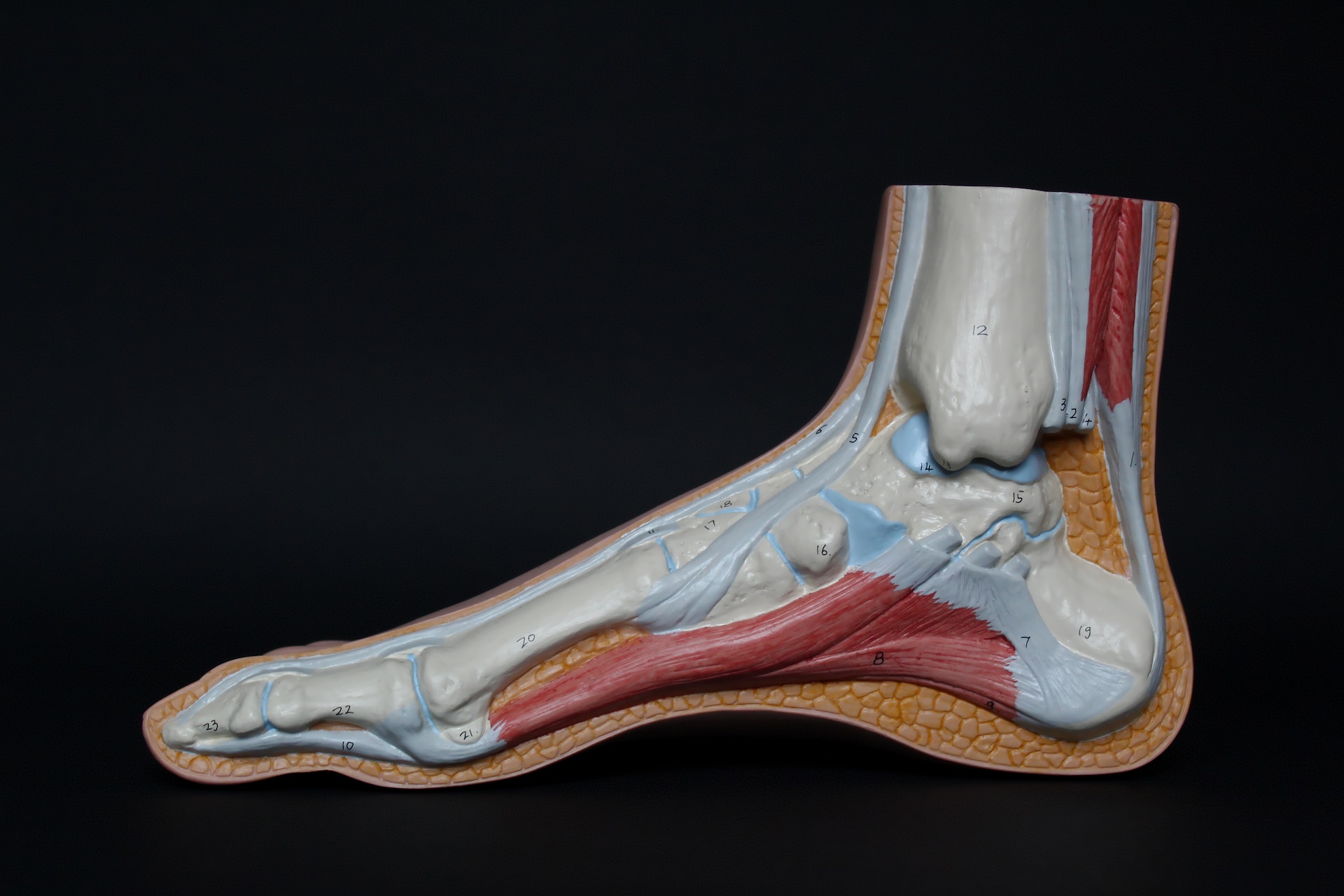
There are many possibilities for the development of the disease, so it is often difficult to determine the cause. The most common causes of Morton's neuroma include:
Foot injuries: Morton's neuroma often develops due to a previous foot injury. Examples of trauma include kicking the toes into a hard object or dropping a weight on the foot. The trauma can lead to compression of the transverse ligament on the common sole nerve of the toes or overstretching of this nerve and inflammation.
Ill-fitting footwear: Poorly fitted footwear can lead to the development of Morton's neuroma. This condition is particularly prevalent when shoes are too small, causing compression in the toe area. Even if the shoes are the correct size, those with narrow tips can still negatively impact foot health.
Heeled shoes: Heeled shoes can lead to the development of Morton's neuroma in individuals who frequently walk in them. When wearing this type of footwear, the toes align in a dorsal bend, causing tension on the nerve![]() . This tension can result in inflammation, ultimately leading to Morton's neuroma.
. This tension can result in inflammation, ultimately leading to Morton's neuroma.
Excessive physical activity: Excessive physical activity puts individuals who maintain a regular exercise routine at risk for Morton's neuroma. The feet can experience excessive stress during physical activity, particularly when the metatarsals bear pressure in sports like running. However, standing for extended periods or sustaining injuries from jumping can also lead to the development of Morton's neuroma.
Post-operative conditions: After undergoing various surgeries, patients may encounter mobility issues in their post-operative phase. This can lead to abnormal and uneven walking patterns, which in turn puts excessive stress on the foot. Ultimately, this increased strain could result in Morton's neuroma.
Flat feet: Flat feet, commonly known as a condition where the foot's arches are lowered, is one of the most frequent foot-related issues. This results in the sole being fully adhered to the ground. Transverse flatfoot, specifically, leads to increased stress that may transfer to the intermetatarsal area and cause nerve irritation.
Toe deformity: A hallux valgus toe, or hallux, is a foot deformity consisting of a pathological medial deviation of the metatarsal bones with concomitant valgus of the toe, which deviates in the opposite direction to the other toes. Morton's disease is prevalent in people who have a hallux valgus toe.
Microfractures: Microfractures of the bones in the foot, caused by bone-muscle overload of the metatarsal, can also lead to Morton's neuroma. If pain symptoms are downplayed, and last long, fibrous connective tissue can surround the irritated nerve and form a hypertrophied nodule, an actual Morton's neuroma.
Ganglion: A ganglion, or gelatinous cyst, is a nodule surrounded by a sac filled with thick fluid. It is formed as a protrusion of the joint capsule or tendon sheath. Increased synovial production results in a gradual thickening of two primary areas (the tendon sheath/joint capsule), at which the ganglion forms. Any ganglions in the area of the plantar nerve can contribute to the development of Morton's disease.

An irritated or damaged nerve leads to very unpleasant symptoms. However, visually, you may not notice any changes in Morton's neuroma. Typical symptoms of Morton's neuroma are:
The symptom of Morton's neuralgia is forefoot pain on the sole side of the interdigital space, generally around the base of the toes. This pain is often burning, burning in nature. It often radiates to the toes, less often toward the ankle joint. The pain usually occurs with walking and standing and decreases with rest. The discomfort is sometimes very intense and makes it challenging to move around. The pain can worsen as the neuroma grows, when high-heeled shoes![]() are worn, or when standing on tiptoe.
are worn, or when standing on tiptoe.
In some cases, swelling between the toes may be noticed, although it is not always present. Increased accumulation of overload causes local swelling and puts pressure on the surrounding tissues near the nerve. Swelling typically occurs with aggravated inflammation. To relieve swelling, applying ice or cold compresses and using special anti-inflammatory ointments can be effective.
In addition to foot pain, there may be other accompanying symptoms experienced with Morton's neuroma. It often begins with a tingling sensation, particularly between the toes or metatarsal bones. This is followed by episodes of intense pain. Individuals might also notice numbness in their toes or cramping in the forefoot. As the condition progresses, all symptoms worsen and become constant even during rest.
Another telltale sign of Morton's neuroma is the feeling as if there is a foreign object![]() under the foot. Sufferers compare the sensation they experience to when a pebble is stuck in their shoe and makes its presence known every time they step. A similar feeling to a neuroma is also given by a ganglion, a benign nodule filled with gelatinous contents that presses on a nerve.
under the foot. Sufferers compare the sensation they experience to when a pebble is stuck in their shoe and makes its presence known every time they step. A similar feeling to a neuroma is also given by a ganglion, a benign nodule filled with gelatinous contents that presses on a nerve.
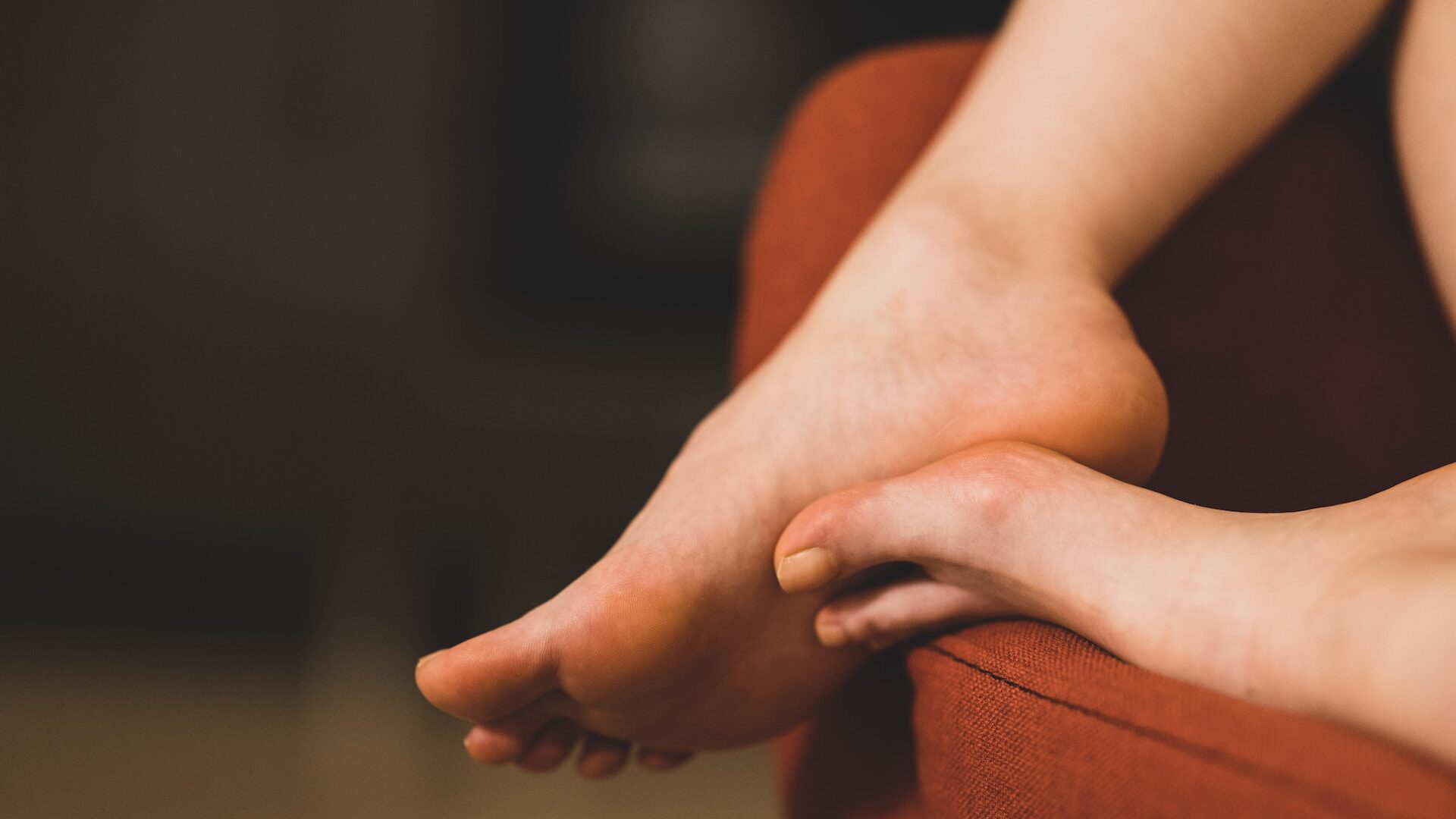
Seeking medical assistance is crucial for determining the appropriate treatment and preventing potential complications. In diagnosing Morton's neuroma, a comprehensive assessment of the foot is fundamental. The following tests are used to diagnose Morton's neuroma:
Mulder test: The first step is usually a doctor's foot examination. In this case, the Mulder sign, which involves squeezing the patient's forefoot and having the patient feel a palpable jumping of tissues between the metatarsal bones, is helpful. The sudden reduction of the space in which Morton's neuroma runs provokes pain and can cause a characteristic audible crackle.
Ultrasound: Ultrasound, a non-invasive diagnostic test, accurately assesses changes in the foot. It utilizes imaging technology to highlight nerve structure thickening and aid in determining the underlying cause of the problem.
MRI: MRI is a commonly used non-invasive test that provides detailed images of the body without the use of ionizing radiation. By utilizing cross-sectional imaging, it effectively detects any potential abnormalities in the foot.
X-ray: This radiological examination is a non-invasive imaging method for detecting possible abnormalities in the structure of the foot. It helps distinguish neuroblastoma from other common foot conditions like adipoma, cartilage issues, ischemic lesions, and diabetic lesions.
Treatment of Morton's neuroma depends on the severity of the condition. At first, the treatment of Morton's neuroma usually is non-surgical and non-invasive. However, in more severe cases, surgery may be necessary. The following treatment methods are used:
Anti-inflammatory medications: Relief from the discomfort of Morton's neuroma is provided by anti-inflammatory drugs![]() that reduce inflammation. In treating Morton's neuroma, anti-inflammatory ointments that contain m*******m in their formulation give good results. The lotion is applied to the painful areas; rest is also recommended.
that reduce inflammation. In treating Morton's neuroma, anti-inflammatory ointments that contain m*******m in their formulation give good results. The lotion is applied to the painful areas; rest is also recommended.
Rehabilitation: Rehabilitation involves various methods to improve foot and calf structures, strengthen foot and shin muscles, and enhance proprioception. Physical therapy treatments like ultrasound and laser can provide significant relief. Those with neuroma should consider massaging their feet regularly. Stretching the toes and rubbing the middle part of the foot after removing shoes or long walks is also beneficial.
Change of footwear: In treating Morton's neuroma, it is significant to wear appropriate footwear that will not aggravate the inflammation. Good shoes with a wide and comfortable toe box and a low heel on a flexible and properly shaped sole are recommended. The footwear should have loose, comprehensive tips to avoid lateral forefoot compression.
Orthotics: Special orthotics![]() can be helpful in the treatment of Morton's neuroma. Orthotics for flat feet can also be used for Morton's Neuroma. The specially adapted shape with profiled metatarsal elevation supports the transverse arches of the foot, as a result of which even long hours of wearing shoes will be associated with comfort.
can be helpful in the treatment of Morton's neuroma. Orthotics for flat feet can also be used for Morton's Neuroma. The specially adapted shape with profiled metatarsal elevation supports the transverse arches of the foot, as a result of which even long hours of wearing shoes will be associated with comfort.
Corticosteroid injections: The symptomatic treatment of Morton's disease used by doctors is to perform a block, that is, injecting a steroid drug![]() directly into the area irritated by the inflamed nerve under ultrasound guidance. However, too many such injections are not recommended, as they can cause damage to the metatarsophalangeal joints and necrosis of the fatty body of the sole.
directly into the area irritated by the inflamed nerve under ultrasound guidance. However, too many such injections are not recommended, as they can cause damage to the metatarsophalangeal joints and necrosis of the fatty body of the sole.
Alcohol injections: Another less common method is administering an alcohol solution![]() in the same manner as steroids, which permanently damages the nerve. However, such treatment has no proven effectiveness.
in the same manner as steroids, which permanently damages the nerve. However, such treatment has no proven effectiveness.
Surgical treatment: If there is no improvement, surgical nerve excision is used, the effectiveness of which has been proven in many scientific studies. The procedure involves the removal of thickened tissue and is often combined with resectioning a section of the nerve. Sometimes, however, the discomfort can return after surgery.
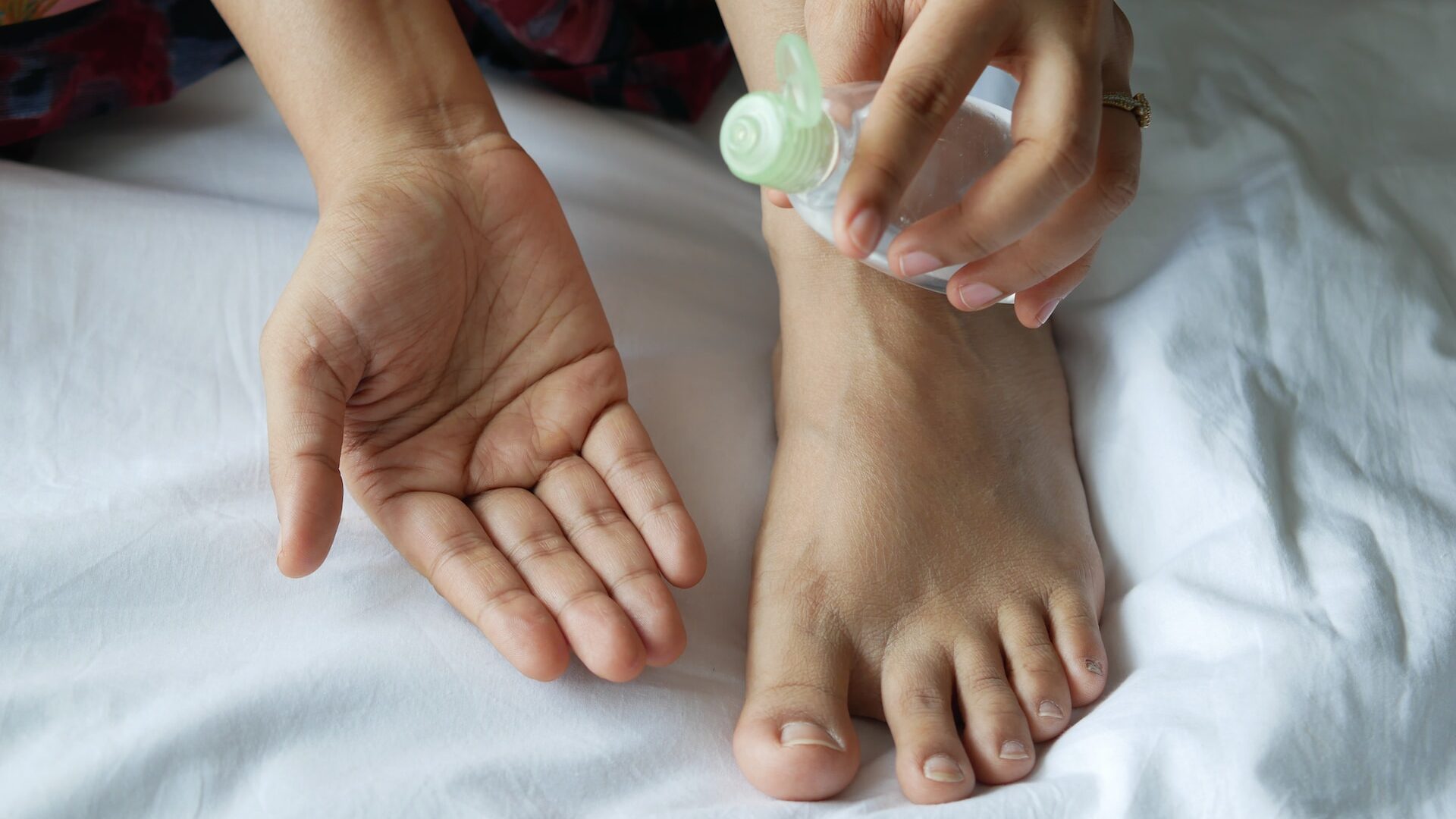
Morton's neuroma in most cases develops between the third and fourth heads of the metatarsal bones. When the foot nerves are continually compressed, they thicken and become inflamed, leading to the development of a tumor.
It's important to note that the term “neuroma” can be misleading because it refers to benign tumors that can form on nerves throughout the body. These tumors involve the growth of extra nerve tissue. In the case of Morton's neuroma, there is neither tissue growth nor tumor. Instead, the existing tissue around the nerve becomes irritated, inflamed, and enlarged.
Before a doctor decides that surgery is necessary, home treatment can help cure the disease. Then, you should follow precautions and change your habits to help you recover. Sometimes, a change of footwear is enough to make the unpleasant discomfort disappear. However, medical care should be sought when inflammation persists for a long time.
Rest: The most crucial thing in treating Morton's neuroma is not to strain the foot. In this case, it is recommended that you give up physical activities and significantly reduce walking or standing. You can rest in a lying position with your legs raised high, which will help relieve the discomfort. In addition, lifting the feet effectively improves the flow of fluids, restoring proper blood circulation in the legs.
Ice packs: If swelling, it is recommended to apply ice to the painful area on the foot. Cold compresses help relieve pain and encourage healing by reducing blood flow. This helps reduce inflammation and swelling and can even reduce nerve activity, which helps with pain.
Anti-inflammatory medications: Anti-inflammatory medications are often used to manage pain and inflammation. Nonsteroidal anti-inflammatory drugs (NSAIDs![]() ) are commonly prescribed for this purpose. It is important to note that these drugs should only be used for a short duration. Prolonged use of high doses of NSAIDs can potentially harm liver cells. Alternatively, you can apply anti-inflammatory ointments topically.
) are commonly prescribed for this purpose. It is important to note that these drugs should only be used for a short duration. Prolonged use of high doses of NSAIDs can potentially harm liver cells. Alternatively, you can apply anti-inflammatory ointments topically.
Massages: Massages can provide relief for Morton's neuroma pain in the foot. One can easily massage their own feet to alleviate discomfort. It's a good practice to stretch your toes and massage the middle part of your foot after removing shoes or walking for an extended period. Using a cream or oil can facilitate the massage process, making it more comfortable.
Footwear: When it comes to footwear, it is important to prioritize comfort and ensure that your toes are not under pressure. You can get special insoles that are soft in the metatarsal area. The use of narrow-nosed shoes and high-heeled footwear should be abandoned. Changing your footwear to wide, flat shoes with smooth soles can help significantly.

How long the condition of Morton's neuroma will last depends on some factors. The duration of Morton's neuroma varies for each individual case. It can range from a few days to several weeks, and in severe cases, if left untreated, it may persist for years. This emphasizes the importance of changing habits and taking proper care during treatment and after undergoing surgery. The intensity of inflammation can also impact the effectiveness of treatment. Therefore, it is crucial for patients to follow their prescribed treatment plan diligently.
If left untreated, Morton's neuroma can lead to a consequential deterioration in the quality of life. It is important to remember that an untreated Morton's neuroma can grow, intensifying the pain and worsening the overall foot condition. This can significantly limit movement and the performance of daily activities.
Mobility disorder: People with untreated Morton's neuroma experience chronic discomfort, which negatively affects the comfort of life and restricts movement. Ongoing Morton's neuroma will make it difficult to walk and engage in physical activities. Even driving may prove difficult or impossible, as pressing the foot against the pedals in a car can cause pain.
Abnormal gait: Patients experiencing constant Morton's neuroma pain may begin to walk unconventionally. They change their walking positions to avoid putting stress on the foot. Such a long-term change can be detrimental to health. Incorrect posture can affect the back, neck, and other body parts. As a result, arthritis can develop.
Pain in the instep of the foot: Many people with untreated Morton's neuroma may experience constant pain in the instep of the foot. The instep of the foot is called the area located just below the toes. The part of muscles and tendons connects the metatarsal and heel. The primary function of the instep is to maintain the body's stability and give the foot proper motor skills. Pain in the foot's instep is often sharp, stabbing and prevents normal movement.
Arthritis: An abnormal walking posture with neuroma neuritis can lead to arthritis![]() . Arthritis is a group of diseases in which joints are damaged, deformed, and have limited mobility. They give characteristic symptoms such as pain, swelling, and joint stiffness. Therefore, Morton's neuroma should not be underestimated, as it can have serious consequences.
. Arthritis is a group of diseases in which joints are damaged, deformed, and have limited mobility. They give characteristic symptoms such as pain, swelling, and joint stiffness. Therefore, Morton's neuroma should not be underestimated, as it can have serious consequences.
Specific groups of people may be at risk for Morton's neuroma. Such individuals should exercise extreme caution, especially when they notice alarming symptoms. Risk groups for Morton's neuroma include:
Women: It has been noted that women are much more likely to suffer from Morton's disease than men. This may be related to the fact that women's footwear is more likely to cause injury. This includes shoes with narrow tips, as well as high-heeled shoes. Walking in unhealthy footwear is the most common reason for Morton's neuroma.
People over 50: Seniors over the age of 50 face a higher risk for Morton's neuroma. Their weakened immune system makes them more susceptible to inflammation, while mobility issues can contribute to improper walking patterns that further promote the development of Morton's neuroma.
People with flat feet: Transverse flat feet cause increased stress on the metatarsal bone area. Therefore, people with flat feet are at higher risk for Morton's neuroma. Using appropriate treatment should reduce this risk. Special orthotics are used for this purpose, and physiotherapy is also recommended.
Obese people: Overweight and obesity![]() contribute to many serious conditions, including foot deformities and other diseases like Morton's neuroma. Obese people are also more susceptible to plantar fasciitis and heel pain. This condition involves inflammation of the ligaments. When these ligaments are inflamed, it causes heel pain and stiffness.
contribute to many serious conditions, including foot deformities and other diseases like Morton's neuroma. Obese people are also more susceptible to plantar fasciitis and heel pain. This condition involves inflammation of the ligaments. When these ligaments are inflamed, it causes heel pain and stiffness.

Morton's neuroma can be confused with other disease entities that produce similar symptoms. Specialists often have trouble correctly diagnosing Morton's neuroma. Therefore, when experiencing symptoms typical of Morton's neuroma, it is also worth bearing in mind the possibility of conditions such as:
Fracture: Morton's neuroma may sometimes be mistaken for a stress fracture![]() . In such cases, it is worth considering whether there has been any recent trauma that could have caused a fracture. Imaging studies can help visualize the potential fracture and identify the underlying issue.
. In such cases, it is worth considering whether there has been any recent trauma that could have caused a fracture. Imaging studies can help visualize the potential fracture and identify the underlying issue.
Arthritis: Morton's neuroma can produce similar symptoms to arthritis![]() . This is when there is also pain, swelling, and stiffness in the joints, resulting in limited mobility. However, in the case of arthritis, this disease usually also affects other areas, not just those within the foot. Problems with the immune system can cause arthritis, so it is essential to determine the cause of the disease.
. This is when there is also pain, swelling, and stiffness in the joints, resulting in limited mobility. However, in the case of arthritis, this disease usually also affects other areas, not just those within the foot. Problems with the immune system can cause arthritis, so it is essential to determine the cause of the disease.
Synovitis: Synovitis![]() is inflammation of the connective tissue that makes up the synovial bursa, a structure located at the points where muscles and tendons slide over bones. Sometimes, Morton's neuroma co-occurs with this condition. Diagnosis will be provided by ultrasound examination.
is inflammation of the connective tissue that makes up the synovial bursa, a structure located at the points where muscles and tendons slide over bones. Sometimes, Morton's neuroma co-occurs with this condition. Diagnosis will be provided by ultrasound examination.
Tarsal tunnel syndrome: Burning pain in the foot while walking or running can be a sign of posterior tibial nerve neuropathy, a condition commonly referred to as tarsal tunnel syndrome. This condition requires comprehensive treatment. If underestimated, it can even lead to muscle atrophy in the foot, so proper diagnosis is essential.
Morton's neuroma is often known as midfoot pain syndrome. It refers to a benign nodule of a peripheral nerve, causing compression and irritation. This condition is frequently associated with inflammation and degenerative changes in the metatarsal area. The development of Morton's neuroma can be caused by various factors, making it challenging to determine the exact cause. One common factor is previous foot injury. Wearing ill-fitting shoes can lead to development of this condition.
Despite not being visually noticeable, an irritated or damaged nerve leads to bothersome symptoms. One prominent symptom of Morton's neuralgia is pain on the sole side of the interdigital space, typically around the base of the toes. This pain is often described as burning in nature.Metatarsal pain should not be underestimated, and seeking medical assistance for proper diagnosis and treatment is crucial to prevent complications.
Diagnosis primarily involves a comprehensive examination of the affected foot. The treatment approach for Morton's neuroma depends on its severity; initially, non-surgical and non-invasive methods are employed; however, more severe cases may require surgical intervention. Neglecting treatment for Morton's neuroma can significantly impact one's quality of life.
Table of Contents
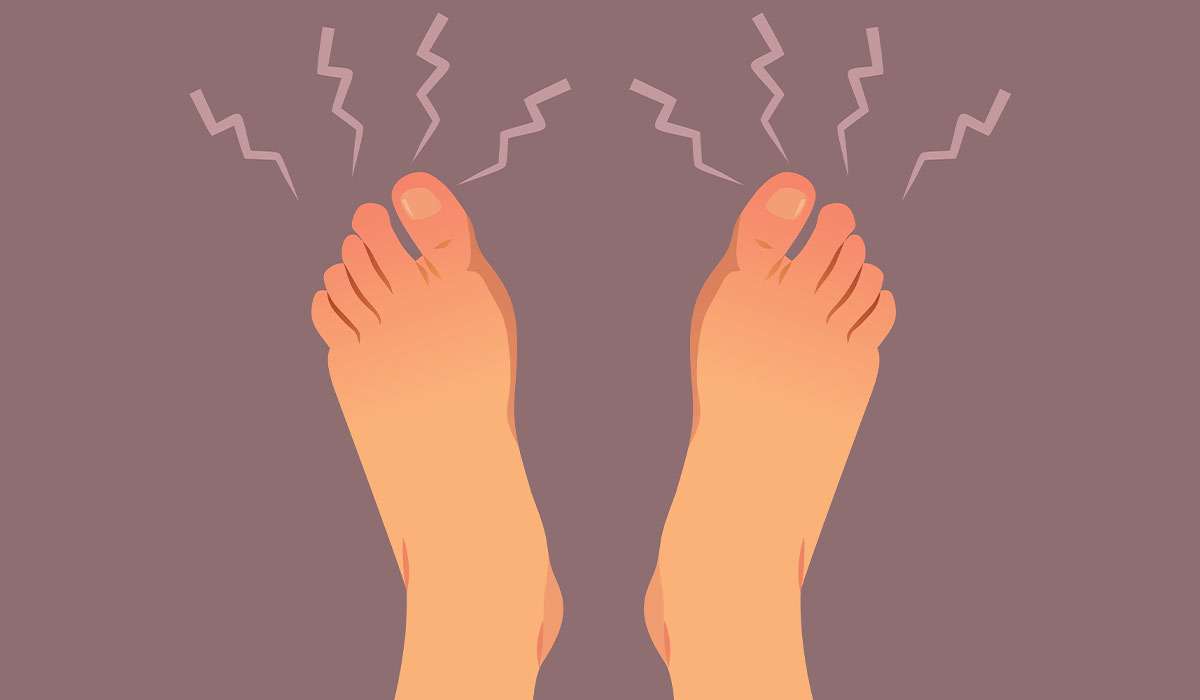
An athlete's foot, or tinea pedis, is an infection of fungal origin that affects the feet. It is usually mild… read more »
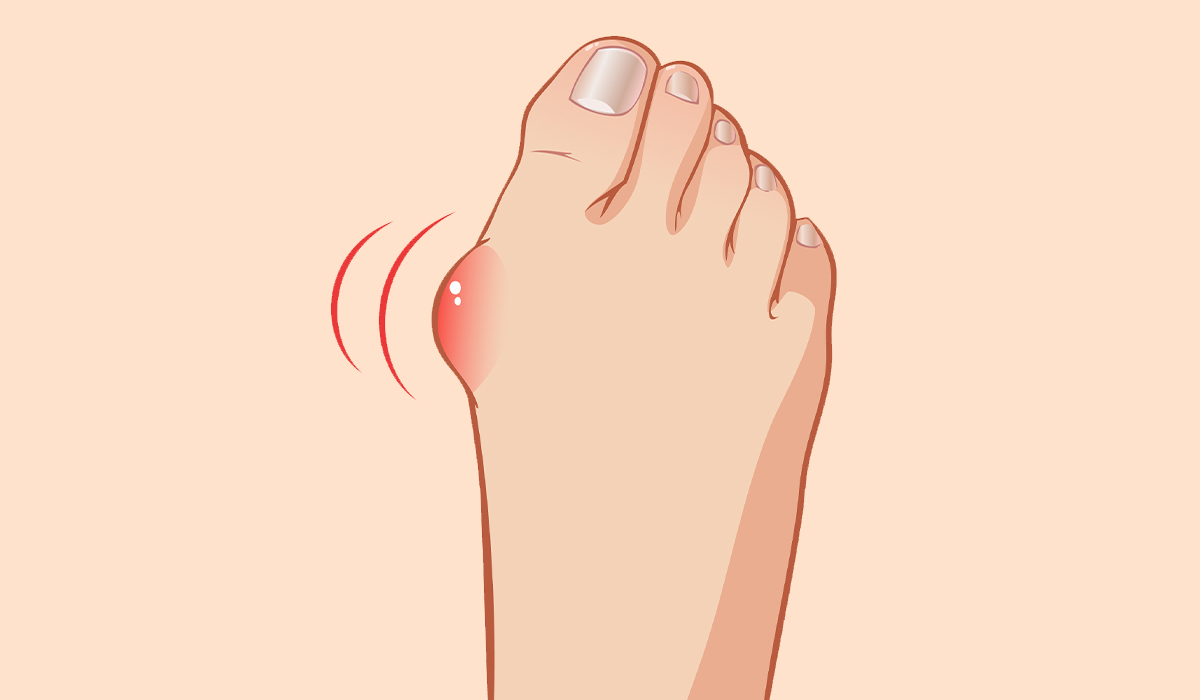
A bunion, which doctors name Hallux Valgus, is when there's a clear bump on the side root of your big… read more »
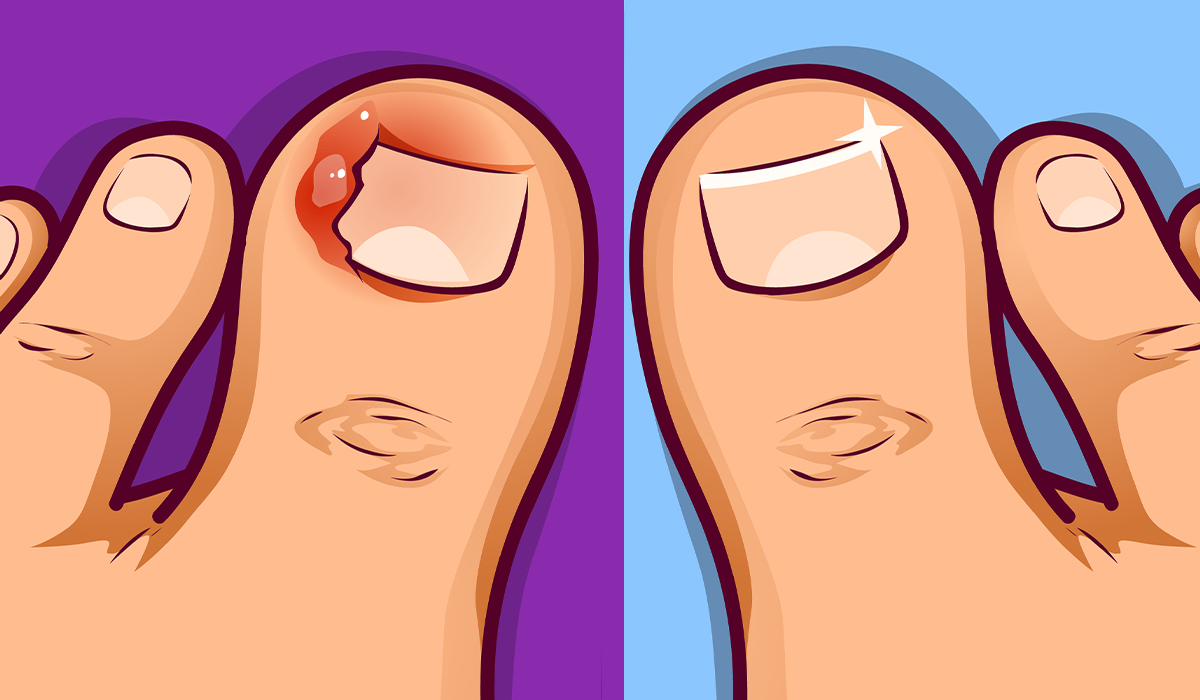
An ingrown toenail that develops into the skin, which specialists call onychocryptosis, happens when the edge or corner of the… read more »

Plantar fasciitis, an inflammation of the plantar fascia, is one of the most common conditions causing stiffness, pain, and swelling… read more »
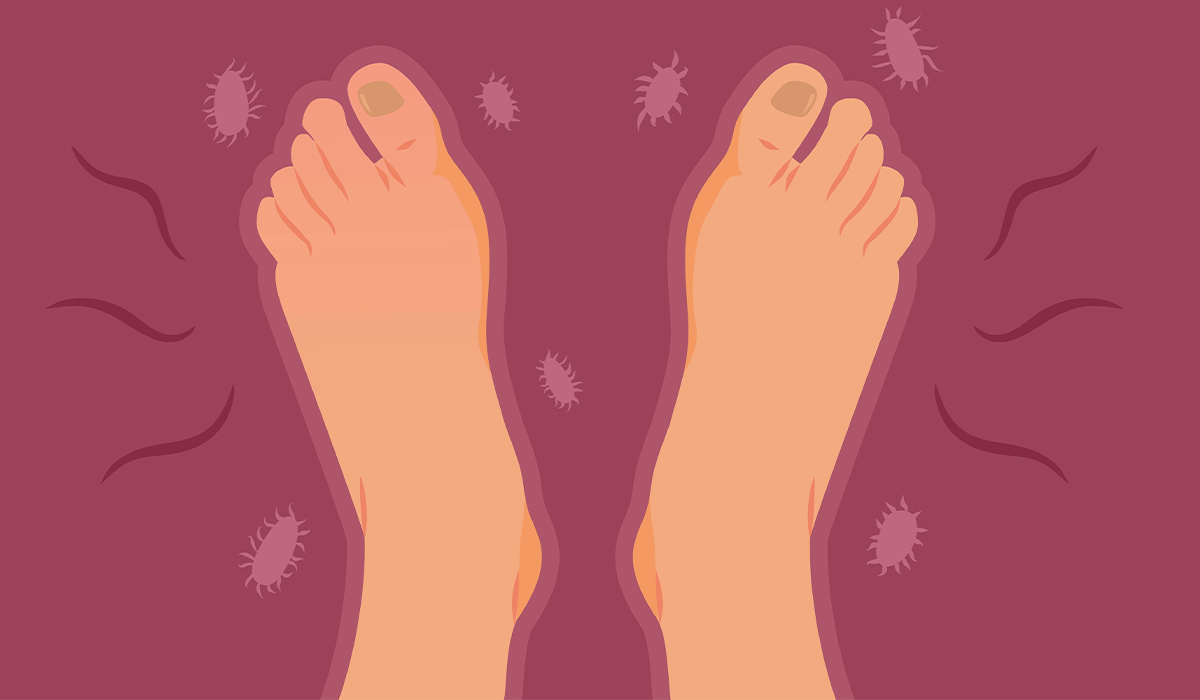
Toenail fungus, scientifically named Onychomycosis, is a common ailment that changes the appearance of toenails. Ordinarily, it turns typical and… read more »

Psoriatic arthritis is a long-lasting inflammatory disease of the joints in patients with psoriasis, which can cause joint destruction and… read more »

Muscle pain and stiffness – these can be the first symptoms of arthritis. Learn about the most common types of… read more »

Cold feet are usually harmless symptoms caused by the body's reaction. However, it can also be a warning sign that… read more »

Shin splints, or medial tibial stress syndrome, surface on the lower side of the leg near the shinbone and bring… read more »